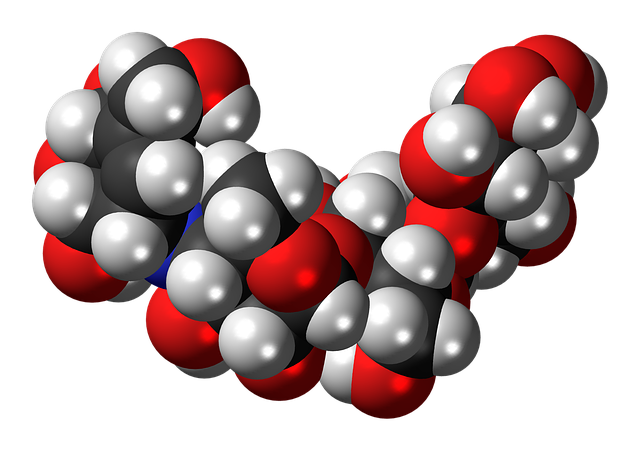GLP-1 agonists, revolutionizing diabetes management, mimic natural gut hormone GLP-1 to control blood sugar levels and offer significant benefits including improved glycemic control, weight loss, and reduced risk of complications. Rising global type 2 diabetes cases, personalized healthcare focus, and unique drug benefits have driven market growth. Patient preferences for flexible, convenient treatments like once-weekly or daily injections have spurred innovation in delivery technologies. The competitive landscape features leading pharmaceutical companies like Eli Lilly, Novo Nordisk, and Sanofi investing heavily in R&D to introduce innovative treatments. Global trends vary, with North America holding the largest share due to early market availability and advanced healthcare infrastructure. Future prospects include expanded applications beyond diabetes, such as weight management and cardiovascular health, and combinations with other medications, positioning GLP-1 drugs as key components of personalized healthcare solutions. Strict regulatory processes and rising obesity rates shape the market, requiring healthcare policymakers to balance cost-effectiveness, access to care, and patient outcomes.
The global market for GLP-1 agonists is experiencing significant growth, driven by increasing diabetes prevalence and improved therapeutic understanding. This article delves into the dynamic landscape of GLP-1 drugs, analyzing key trends shaping their usage. From patient preferences influencing treatment adherence to competitive strategies among major players, we explore regional variations in distribution and emerging innovations in therapy. Understanding these factors is crucial for navigating the evolving market of GLP-1 drugs and their role in diabetes management.
Understanding GLP-1 Agonists: A Key Player in Diabetes Management

GLP-1 agonists are a class of drugs that have revolutionized diabetes management, particularly for patients with type 2 diabetes. These medications mimic the effects of glucagon-like peptide-1 (GLP-1), a natural hormone produced in the gut that regulates blood sugar levels by stimulating insulin release and inhibiting glucagon secretion. By targeting this physiological pathway, GLP-1 drugs offer significant benefits, including improved glycemic control, weight loss, and reduced risk of diabetes-related complications.
This innovative approach to diabetes treatment has led to a surge in GLP-1 drug usage, with various brands competing in the market. The rise in popularity is attributed to their efficacy, convenience (often administered once daily or through weekly injections), and improved patient adherence compared to traditional insulin therapy. As research continues to uncover more benefits, the future of GLP-1 agonist usage looks promising, positioning them as a key player in diabetes management globally.
The Growing Market: Increased Demand for GLP-1 Drugs

The market for GLP-1 drugs has witnessed a significant surge in recent years, driven by an increasing demand for effective diabetes management solutions. This growth is largely attributed to the growing prevalence of type 2 diabetes worldwide, as well as a heightened awareness and focus on personalized healthcare approaches. The unique benefits of GLP-1 agonists, such as their ability to stimulate insulin secretion and inhibit glucagon release, have made them a preferred choice for both patients and healthcare providers.
The rising adoption rates can also be linked to improved therapeutic outcomes and enhanced patient satisfaction. As research continues to uncover the versatile applications of GLP-1 drugs, not only in diabetes treatment but also in weight management, the market is poised for further expansion. This increasing demand has led to intensifying competition among pharmaceutical companies, prompting innovation and the development of more advanced and accessible GLP-1 drug formulations.
Patient Preferences and Treatment Adherence: Impact on Market Trends

Patient preferences and treatment adherence play a significant role in shaping market trends for GLP-1 drugs. With increasing awareness about diabetes management and lifestyle changes, patients are becoming more engaged in their healthcare decisions. This shift has led to a growing demand for treatments that offer flexibility and convenience, such as once-weekly or once-daily injections of GLP-1 agonists. Patient preferences for less invasive dosing regimens and improved user experience have driven innovation in drug delivery technologies, further enhancing treatment adherence.
Treatment adherence is crucial because it directly impacts clinical outcomes. Studies show that patients who consistently use GLP-1 drugs as prescribed tend to achieve better glycemic control. Improved adherence rates contribute to a more favorable market landscape by increasing the potential for positive health outcomes and reducing the economic burden of diabetes management. Manufacturers of GLP-1 drugs are responding by developing patient-friendly formulations and educating healthcare providers about the benefits of these treatments, which in turn can enhance treatment adherence and influence market dynamics.
Competitive Landscape: Major Players and Their Strategies

The competitive landscape in the GLP-1 drugs market is dynamic, with several key players vying for a larger share. Companies like Eli Lilly and Company, Novo Nordisk, and Sanofi are among the industry leaders, each with their unique strategies to dominate the sector. These pharmaceutical giants have heavily invested in research and development to bring innovative GLP-1 agonist treatments to the market.
Eli Lilly has made significant strides with its drug, Semaglutide, which has shown promising results in clinical trials for type 2 diabetes management. Novo Nordisk, too, has a robust pipeline of GLP-1 drugs, focusing on improving existing formulations and exploring new delivery methods. Sanofi, a global healthcare leader, is known for its comprehensive approach, integrating various therapies and partnerships to expand its GLP-1 drug portfolio. The competition among these major players drives innovation and helps shape the future of GLP-1 agonist usage in diabetes treatment.
Regional Analysis: Global Distribution and Usage Patterns

The global landscape of GLP-1 agonist usage reveals intriguing regional variations and usage patterns. North America currently dominates the market, with the United States leading the way in both prescription rates and overall sales of GLP-1 drugs. This dominance can be attributed to early market entry, robust healthcare infrastructure, and a highly aware patient population. However, Asia-Pacific is emerging as a significant player, with countries like Japan and South Korea showing substantial adoption rates due to their advanced healthcare systems and increasing diabetes prevalence.
Europe follows closely behind, with varying levels of GLP-1 agonist usage across different countries. The United Kingdom and Germany stand out for their high prescription rates, while other European nations are catching up as they invest in diabetes management and innovative healthcare solutions. These regional disparities highlight the diverse needs and preferences in global drug markets, offering insights for manufacturers to tailor strategies and improve accessibility of GLP-1 drugs worldwide.
Future Prospects: Emerging Trends and Innovations in GLP-1 Therapy

The future of GLP-1 agonist therapy looks promising, with emerging trends and innovations setting new directions in diabetes management. One prominent trend is the development of more advanced, long-acting GLP-1 drugs that offer sustained blood sugar control throughout the day. These next-generation medications aim to mimic the natural actions of GLP-1, providing a continuous effect without the need for multiple daily injections. Such advancements could significantly improve patient adherence and quality of life.
Additionally, researchers are exploring the potential of GLP-1 therapy in treating other metabolic disorders beyond type 2 diabetes. Studies are investigating its role in weight management, cardiovascular health, and even neuroprotective effects. The versatility of GLP-1 drugs is also being explored in combination therapies, where they could be paired with other medications to offer more comprehensive treatment options. These innovations hold the key to shaping a future where GLP-1 therapy becomes an integral part of personalized healthcare solutions.
Regulatory Considerations and Market Dynamics

The market for GLP-1 drugs is shaped by intricate regulatory considerations and dynamic industry trends. Regulatory bodies worldwide, such as the FDA and EMA, play a pivotal role in ensuring safety and efficacy standards for these medications. Stringent approval processes involve rigorous clinical trials to demonstrate their benefits in treating type 2 diabetes and potentially other metabolic disorders. Once approved, ongoing surveillance is crucial to monitor any long-term effects or rare adverse reactions, influencing both patient access and market perception.
Market dynamics are characterized by intense competition among pharmaceutical companies racing to develop novel GLP-1 drugs with improved formulations and delivery methods. This innovation drives brand differentiation and price points, impacting healthcare providers’ prescribing decisions. Additionally, rising obesity rates globally have fueled the demand for these drugs, creating a favorable environment for market expansion. Healthcare policymakers must navigate this landscape, considering cost-effectiveness, access to care, and patient outcomes to shape future GLP-1 agonist usage trends.
